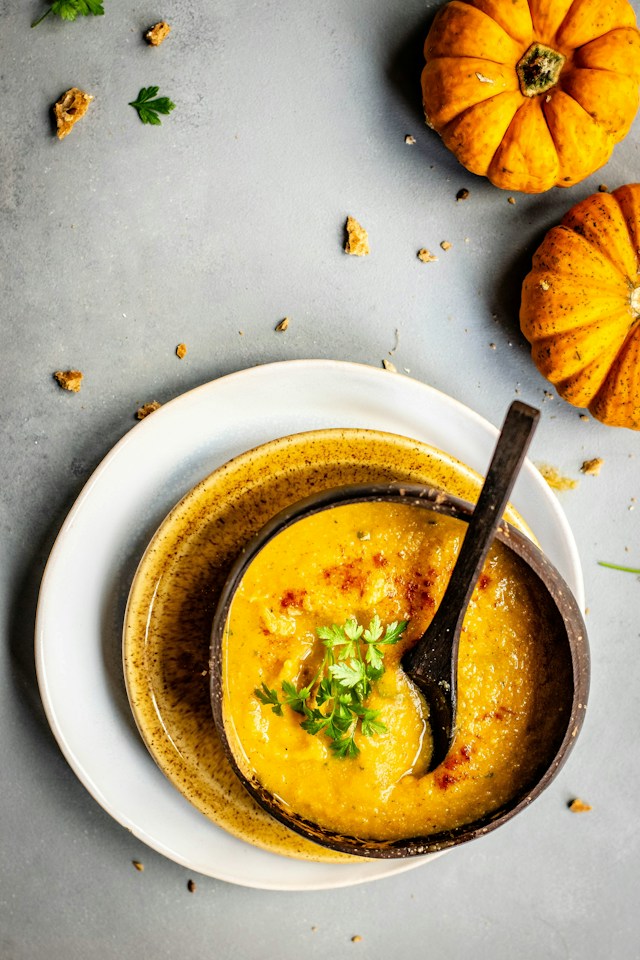The dal dish is a staple to Indian cuisine and is loved by many for its rich and savory taste. It’s a comforting bowl of spiced lentils simmering in a pot of delectable goodness. But have you ever wondered how to make this exquisite dish at home? Don’t worry, we’re here to share the secret to a rich and flavorful Indian dal.
Picking the Right Lentils
A meal steeped in tradition and rich in nutrition, dal begins its journey in your kitchen with the selection of the right lentils. Whole or split, red or green, lentils come in a myriad of shapes, sizes, and colors. While a green lentil provides a firm texture, the red lentil, once cooked, blends into a velvety consistency, presenting a creamier dish. For a traditional Indian dal, opt for the red lentils. They’re a great source of protein and they cook relatively quickly.
Cela peut vous intéresser : How can you infuse gourmet flavors into classic mac and cheese?
However, no matter the variety, it’s crucial to wash your lentils until the water runs clear. This step ensures that any residual dust or debris is removed, leaving you with nothing but clean, perfect lentils ready to be transformed into a delicious dal.
Mastering the Art of Spicing
The magic of the Indian dal lies in its spices. The blend of spices creates a symphony of flavors that dances on your palate. The typical spices used in a dal recipe include cumin, coriander, turmeric, and a dash of chili powder for that gentle heat. Some recipes also call for a teaspoon of garam masala, a potent mix of spices that adds warmth and depth to the dish.
A lire également : How can you achieve the perfect crust on a neapolitan pizza?
Start by heating a teaspoon of oil in a pot, then add your spices. This process, known as tempering, releases the oils in the spices, infusing the dish with an incredible aroma and flavor. Once you’ve tempered your spices, add your washed lentils and give the mixture a good stir to ensure each lentil is coated in the spiced oil.
The Perfect Ratio of Water to Lentil
Getting the right ratio of water to lentil is critical in achieving the perfect consistency for your dal. A common rule of thumb is to use three cups of water for every cup of lentils. Remember, lentils absorb a lot of water as they cook, so it’s better to have more water than less.
Once your lentils and water are in the pot, bring the mixture to a boil. Once boiling, reduce the heat to a simmer and let your dal cook for about 20 minutes, or until the lentils are tender and the water has been absorbed.
Adding the Final Touches
Just when you thought your dal couldn’t get any more flavorful, it’s time to add the final touches. This usually involves adding a mixture of sautéed onions, garlic, and tomatoes into your dal. Adding these sautéed ingredients, known as a Tarka, to the cooked lentils elevates the dish to new heights of flavor.
To make the Tarka, heat another teaspoon of oil in a pan. Add finely chopped onions and garlic to the pan and cook until translucent. Then add chopped tomatoes and cook until they break down and create a sauce. Add this sauce to your dal, stir, and let it cook on low heat for a few more minutes.
Serving Your Dal
Now that your dal is ready, it’s time to enjoy it! Dal is typically served with rice, creating a wholesome, comforting meal. However, it’s also delicious when served with naan or chapatis, which are traditional Indian bread.
While the cooking process might be a bit lengthy, the result is a rich, flavorful, and hearty dal that’s perfect for a cozy night in. Whether you’re an experienced chef or a beginner in the kitchen, this Indian dish is sure to impress everyone at the table.
Remember, the secret to a perfect dal lies in the quality of your lentils, the blend of your spices, the ratio of your water, the final touches of Tarka, and the love and patience you put into cooking. Happy cooking!
Experimenting with Dal Variations
Once you’ve mastered the basic recipe, you can start experimenting with different dal variations. Each region in India has its unique spin on dal, and you can recreate these recipes at home. For instance, if you love a smoky flavor, try making dal makhani. This Punjabi dish uses urad dal (black lentils) and red kidney beans simmered in a creamy sauce of tomatoes, butter, and cream. The dish is smoked with a piece of burning charcoal, which gives it a unique smoky flavor.
Or, if you want something tangy and spicy, go for dal tadka. This recipe uses toor dal (split pigeon peas), but the game-changer is the tempering or tadka of garam masala, cumin seeds, ginger garlic, and green chilies poured over the cooked lentils.
You can also experiment with different cooking methods. While traditional dal recipes require a stovetop, modern cooking appliances like the instant pot can significantly cut down the cooking time. An instant pot is a pressure cooker that can cook your dal in minutes instead of hours, without compromising on the flavor.
If you prefer a vegan or a healthier version, substitute cream or butter with coconut milk. This not only makes your dal dairy-free but also imparts a mildly sweet and creamy texture. It’s a great way to incorporate a different flavor profile to your dal.
Exploring the World of Garnishments
After perfecting the art of dal, it’s time to explore the world of garnishments. On a basic level, a spritz of lemon juice or a sprinkle of chopped coriander can add a fresh note to your dal. If you want to take it a notch higher, consider kasuri methi (dried fenugreek leaves). A sprinkle of these leaves can give your dal a restaurant-like aroma and a slightly bitter aftertaste that complements the overall flavors.
Another popular garnishment is moong dal (split mung beans) fried until crispy. They add a delightful crunch and an added layer of flavor to your dal. And don’t forget about the ginger garlic, finely grated or chopped and sprinkled on top of your dal before serving for an extra kick of flavor.
Conclusion
Cooking a flavorful and hearty Indian dal at home can be a gratifying experience. From picking the right lentils to mastering the art of spicing and achieving the perfect water-to-lentil ratio, each step plays a crucial role in creating a delicious bowl of dal.
Remember to not shy away from experimenting with different dal variations like dal makhani or dal tadka, and utilizing modern appliances like an instant pot for convenience. Also, exploring a variety of garnishments such as kasuri methi or fried moong dal can provide an exciting twist to your traditional dal recipe.
In the end, cooking a perfect dal is not just about following a recipe. It’s about immersing yourself in the process, enjoying each step, and serving a dish made with love. Whether you’re an experienced cook or a beginner, the journey of creating a flavorful Indian dal is sure to be an exciting culinary adventure. Happy cooking!











